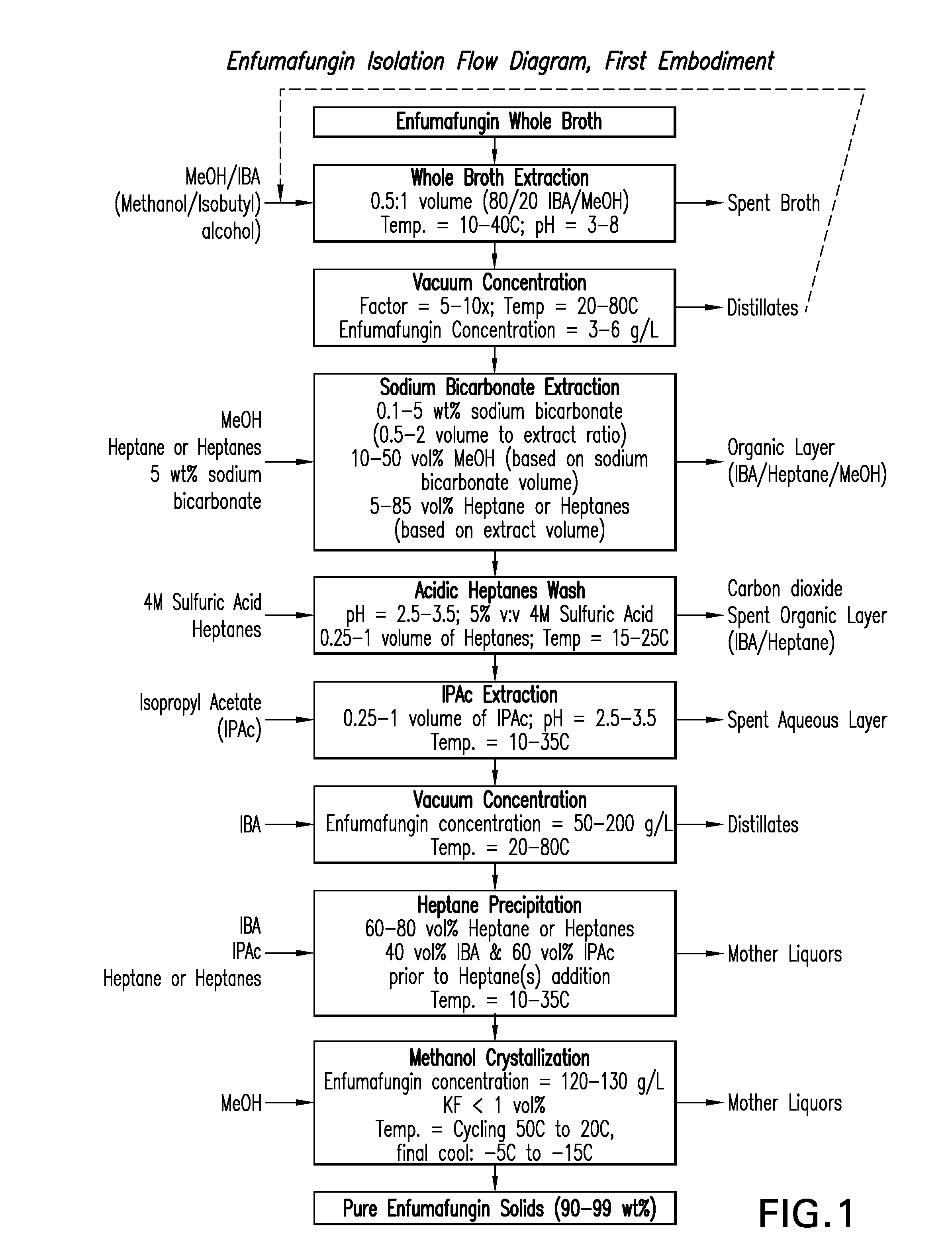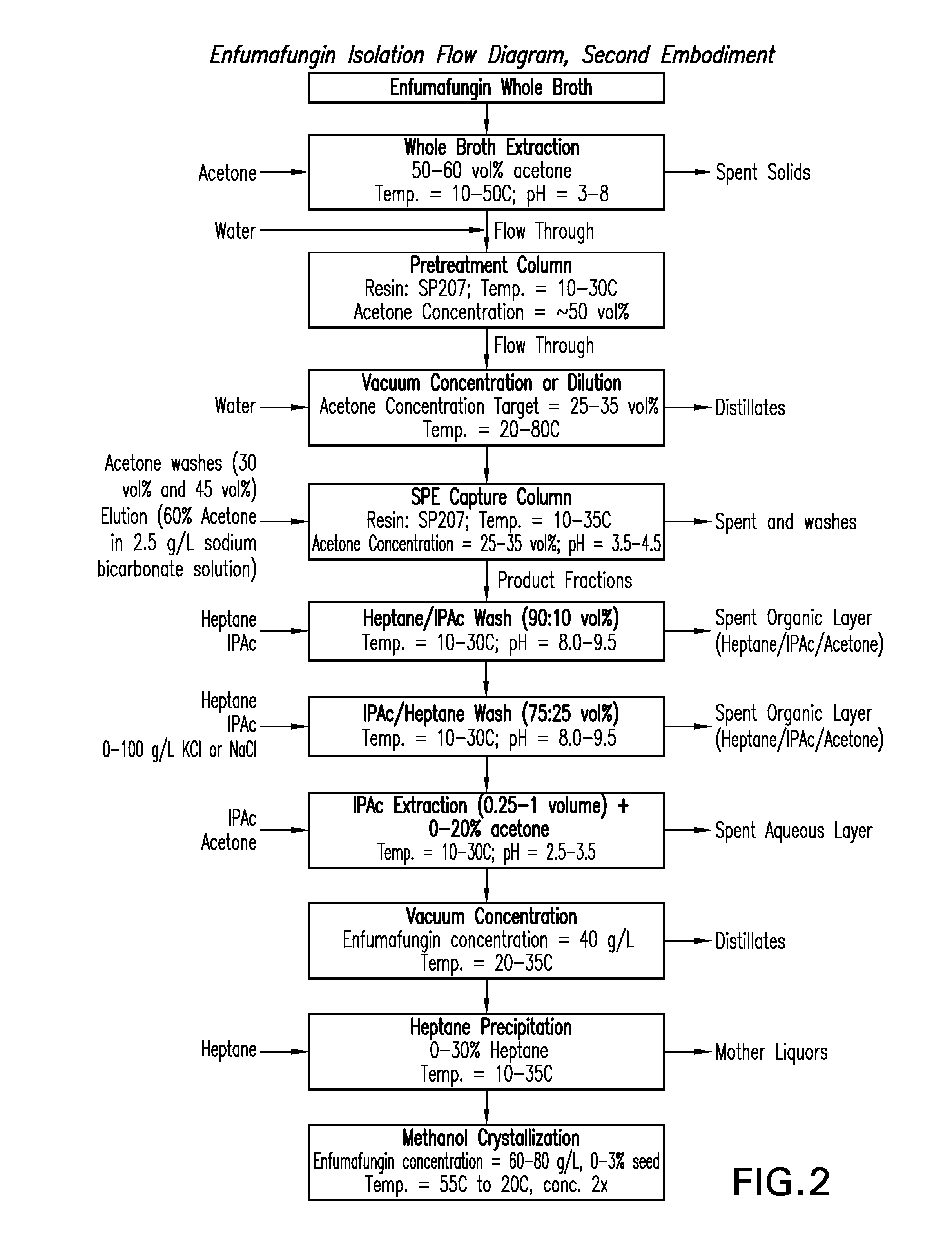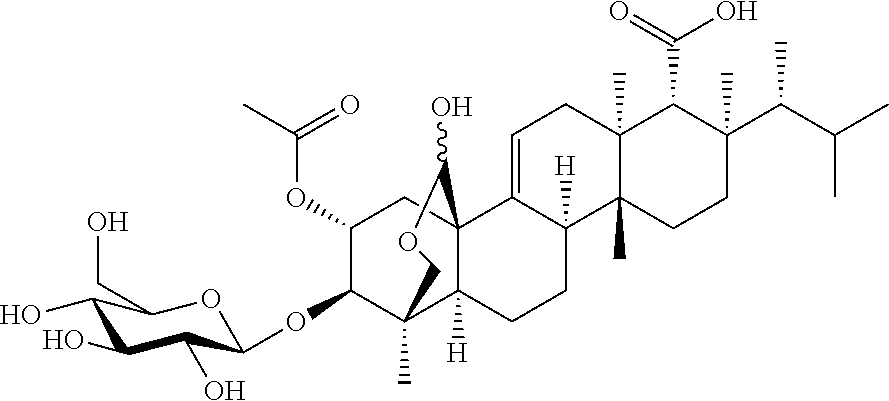Processes for isolation and purification of enfumafungin
a technology of enfumafungin and process, which is applied in the field of process useful in the isolation and purification of enfumafungin, can solve the problems of high incidence of hospital-acquired fungal diseases and still very common treatment failures
- Summary
- Abstract
- Description
- Claims
- Application Information
AI Technical Summary
Benefits of technology
Problems solved by technology
Method used
Image
Examples
first embodiment
Extraction of Enfumafungin from Fermentation Broth
[0062]The isolation of Enfumafungin begins with a solvent extraction to remove the product from the fermentation broth. This extraction is accomplished using a combination of solvents. A combination solvent extraction uses a main solvent accompanied by a co-solvent, which represents from about 0 to about 25 percent by volume (volume percent or vol %) of the total solvent volume. The main solvents that can be used in a combination solvent extraction are methyl ethyl ketone (MEK), isobutanol, ethyl acetate (EtAc), isopropyl acetate (IPAc or IPAC), while co-solvents include methanol (MeOH), ethanol (EtOH), isopropanol, acetone, and acetonitrile. The pH of the extraction ranges from about 3 to about 8 while the temperature ranges from 10 to 40° C. The solvent to whole broth ratio ranges from about 0.8 to about 1.2.
Crude Isolation.
[0063]The spent cell solids from the solvent extraction are separated using centrifugation. If a water immisc...
second embodiment
Extraction of Enfumafungin
[0068]The isolation of Enfumafungin begins with a solvent extraction to produce a liquid containing the compound of formula I. This extraction is accomplished using a single solvent. The following solvents are used to extract the product: methanol, ethanol, isopropanol, acetone, and acetonitrile. The solvent to water composition is dependent on the solvent selected. A typical solvent used for the extraction is acetone with a water to solvent composition of about 45 volume percent, i.e., about 45% water and about 55% acetone. The pH of the extraction ranges from about 3 to about 8, while the temperature ranges from about 10° C. to about 50° C. Insoluble solids are then removed by centrifugation.
Crude Isolation.
[0069]After removal of the solids, then the water to solvent composition is adjusted from about 45 to about 50 volume percent of solvent (for example, from about 48 to about 52 volume percent) and passed through a solid phase extraction pretreatment co...
PUM
| Property | Measurement | Unit |
|---|---|---|
| Temperature | aaaaa | aaaaa |
| Temperature | aaaaa | aaaaa |
| Temperature | aaaaa | aaaaa |
Abstract
Description
Claims
Application Information
 Login to View More
Login to View More - R&D
- Intellectual Property
- Life Sciences
- Materials
- Tech Scout
- Unparalleled Data Quality
- Higher Quality Content
- 60% Fewer Hallucinations
Browse by: Latest US Patents, China's latest patents, Technical Efficacy Thesaurus, Application Domain, Technology Topic, Popular Technical Reports.
© 2025 PatSnap. All rights reserved.Legal|Privacy policy|Modern Slavery Act Transparency Statement|Sitemap|About US| Contact US: help@patsnap.com



